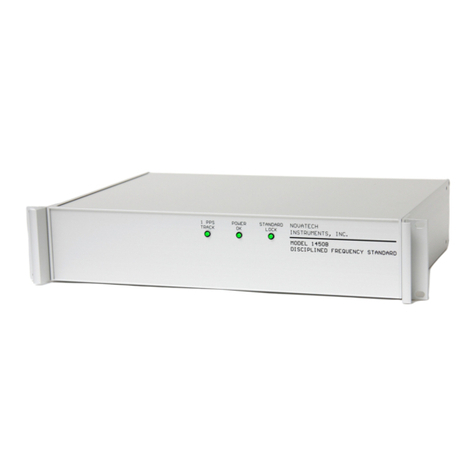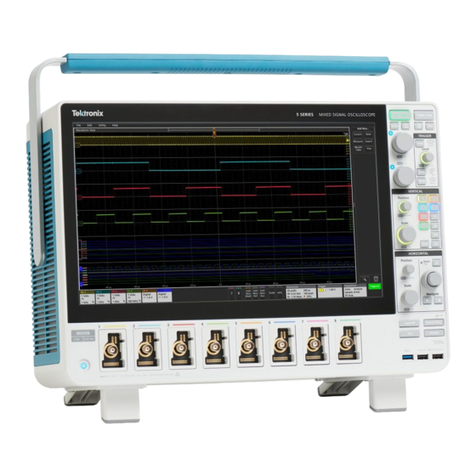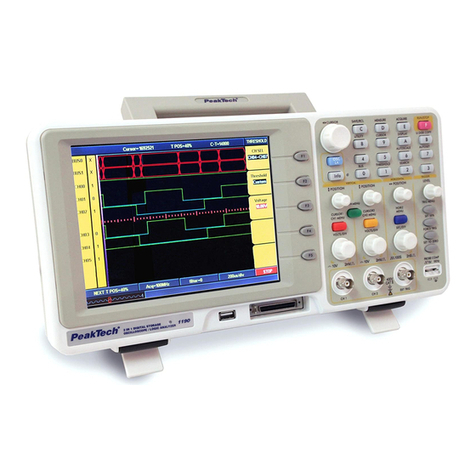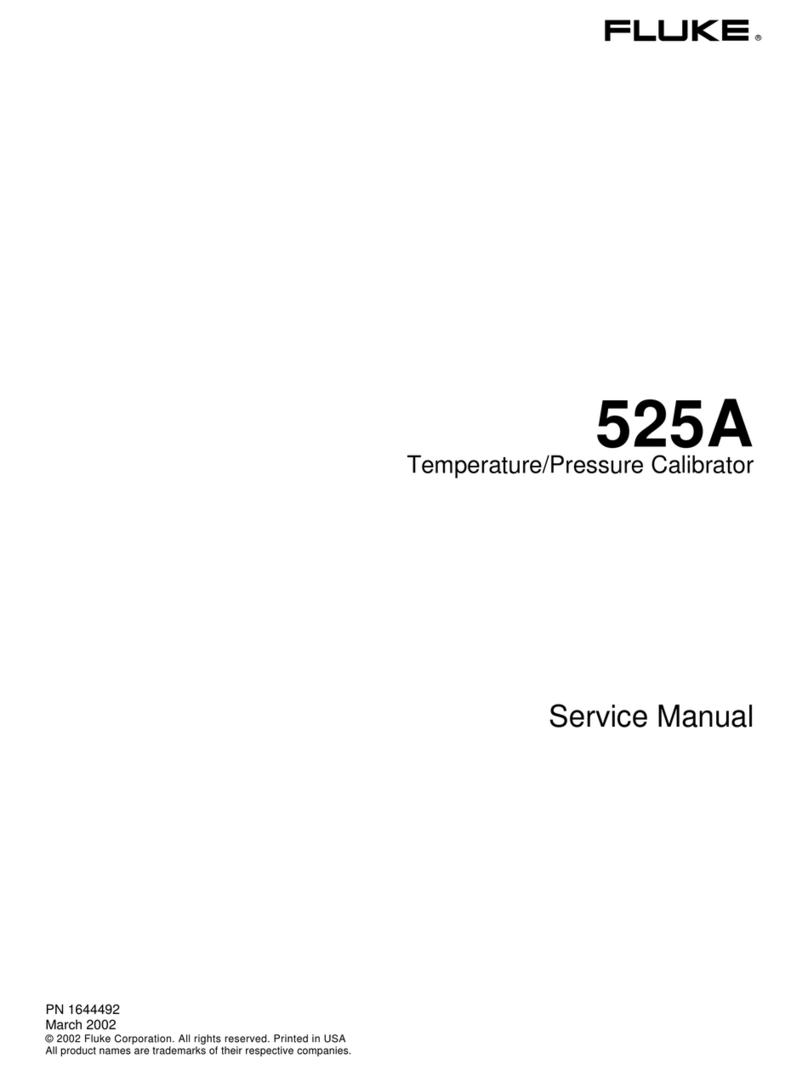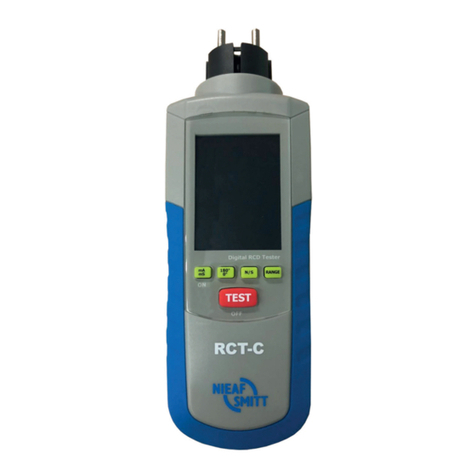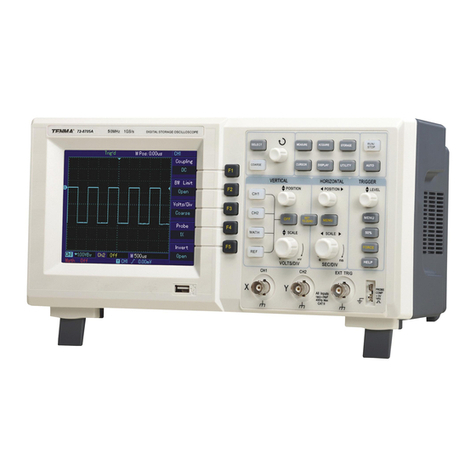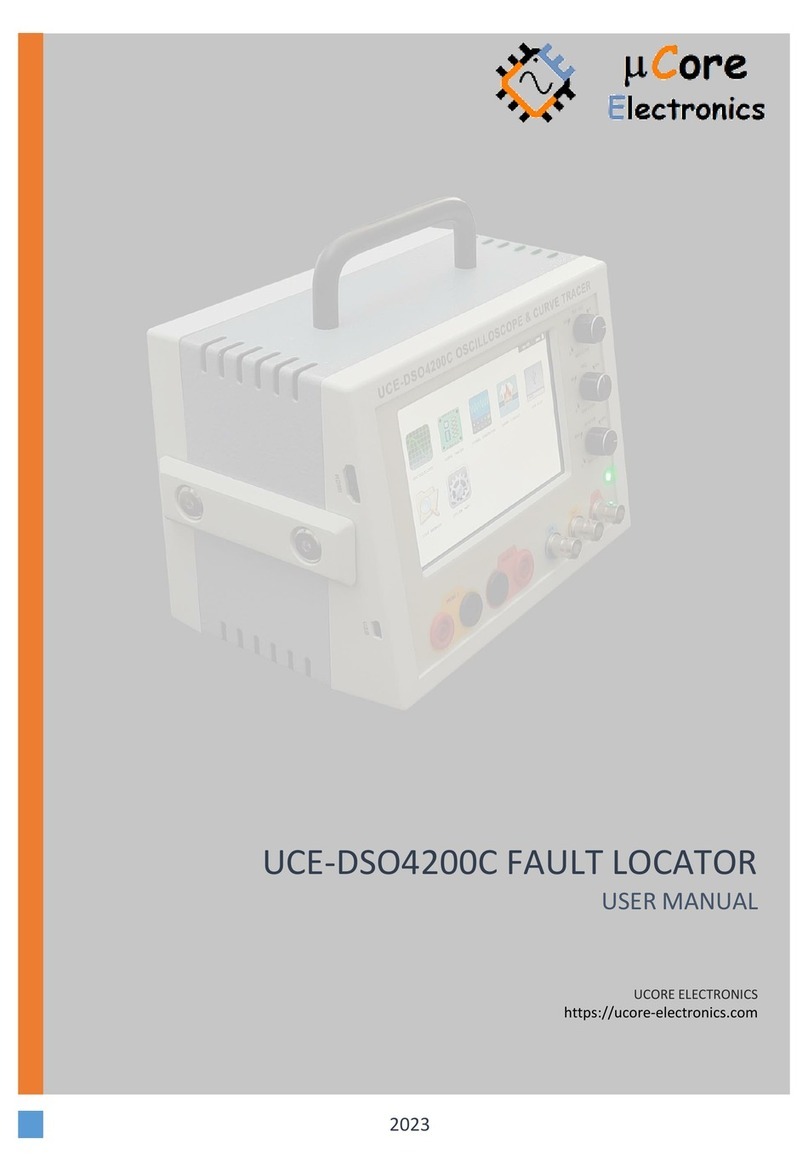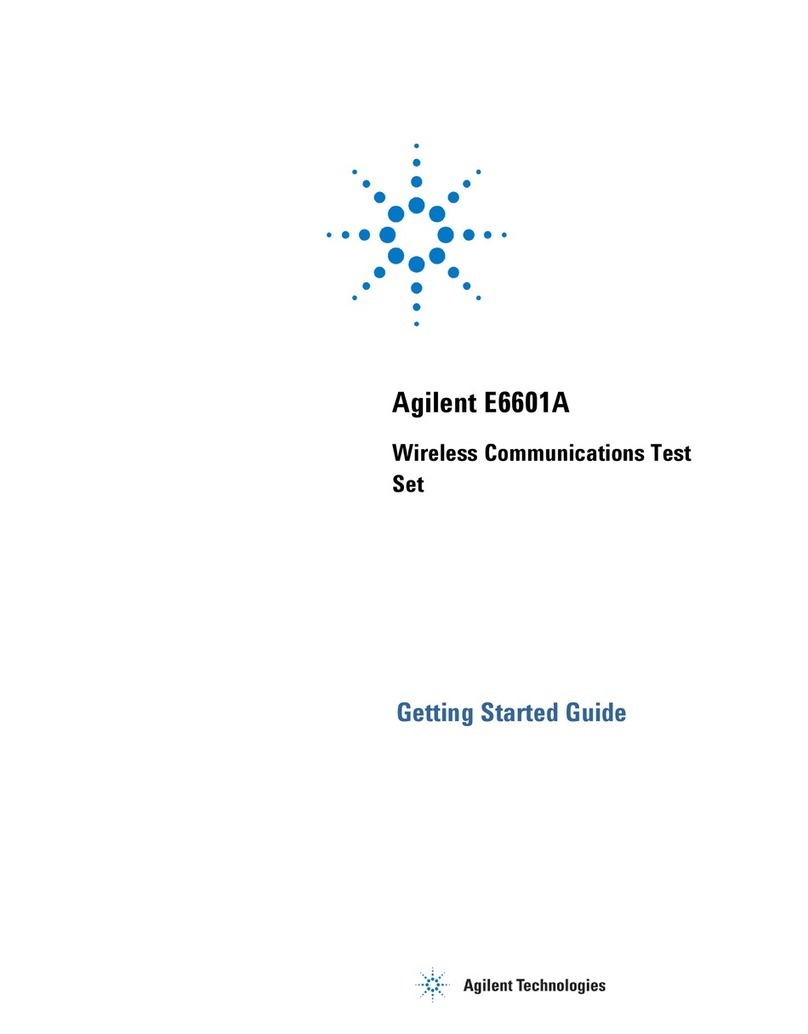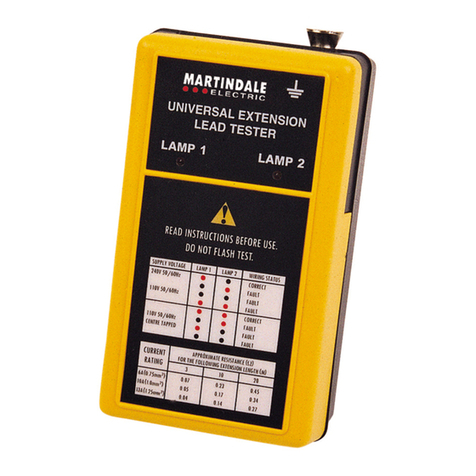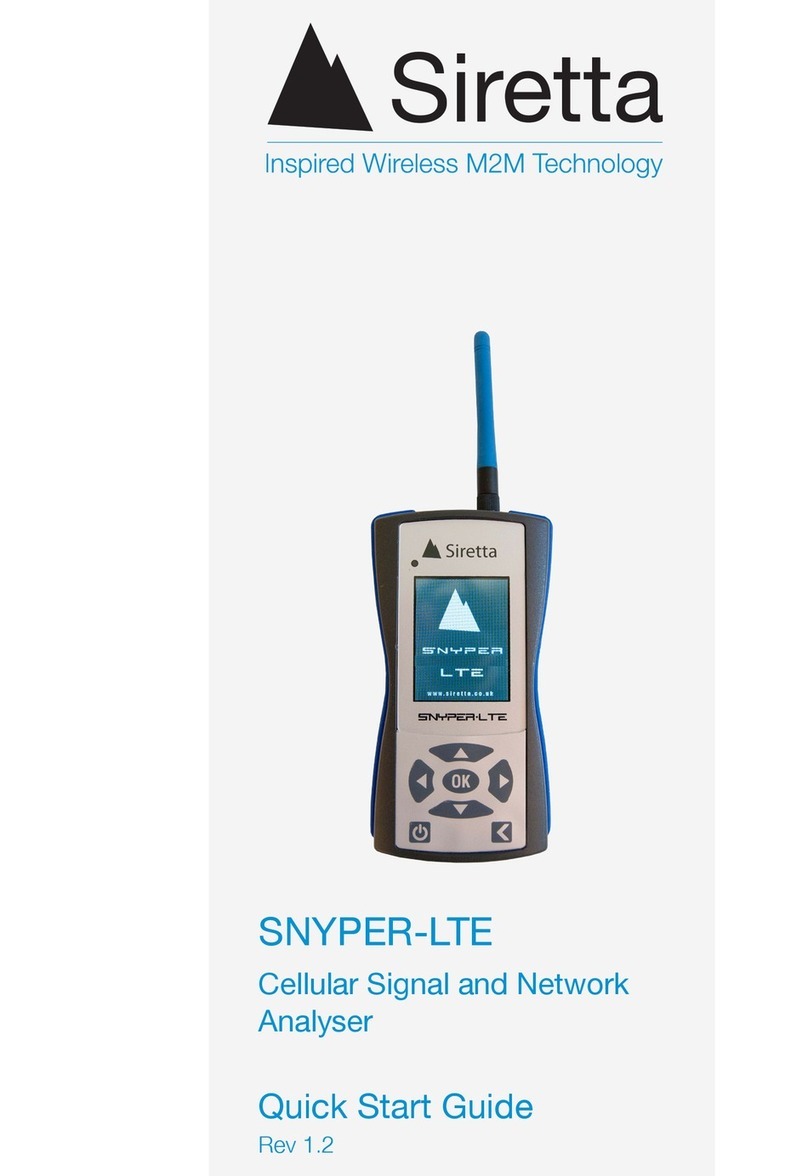Novatech 2960AR User manual

NOVATECH INSTRUMENTS, INC.
1
2960AR/2965AR Manual, 13-Jul-2004
INSTRUMENTS, INC.
Models 2960AR and 2965AR
Disciplined Rubidium Frequency Standards
Section Page Contents
1.0 . . . . . . . . . . . . . . . . . . . . . . . . . . . . . 2 . . . . . . . . . . . . . . . . . . . . . . . . . Description
2.0 . . . . . . . . . . . . . . . . . . . . . . . . . . . . . 2 . . . . . . . . . . . . . . . . . . . . . . . Specifications
3.0 . . . . . . . . . . . . . . . . . . . . . . . . . . . . . 3 . . . . . . . . . . . . . . . . . . . . . . . . . .Installation
4.0 . . . . . . . . . . . . . . . . . . . . . . . . . . . . . 4 . . . . . . . . . . . . . . . . . . . . . . . . . . .Operation
5.0 . . . . . . . . . . . . . . . . . . . . . . . . . . . . . 4 . . . . . . . . . . . . . . . . . . . . . . 1pps Operation
6.0 . . . . . . . . . . . . . . . . . . . . . . . . . . . . . 6 . . . . . . . . . . . . . . . . . . . . .Performance Test
7.0 . . . . . . . . . . . . . . . . . . . . . . . . . . . . . 7 . . . . . . . . . . . . . . . . . . . . . . . . . .Calibration
--. . . . . . . . . . . . . . . . . . . . . . . . . . . . . . . 8 . . . . . . . . . . . . . . . . . . . . . . . . . . . Warranty
2960AR 2965AR

NOVATECH INSTRUMENTS, INC.
2
2960AR/2965AR Manual, 13-Jul-2004
1.0
DESCRIPTION
1.1 The Models 2960AR and 2965AR are rubidium
frequency standards which can be disciplined to an
external 1pps (one pulse per second) reference sig-
nal. This 1pps is commonly derived from primary, or
other standards, such as GPS (global positioning sat-
ellite). When disciplined to 1pps, the 2960AR and
the 2965AR provide primary standard accuracy and
stability.
1.2 The 2960AR provides three fixed frequency
outputs of 10MHz, 10MHz and 5MHz, while the
2965AR replaces one of the 10MHz outputs with a
programmable 50MHz synthesized output. The
2965AR is particularly useful in applications which
require non-standard or customer specified frequen-
cies. The synthesized output is locked to the internal
rubidium oscillator and has the same accuracy as the
10MHz and 5MHz outputs. All outputs have a nom-
inal amplitude of 1Vrms into 50Ω.
1.3 The most recent version of this manual can be
found on Novatech Instruments, Inc. web site.
2.0
SPECIFICATIONS
2.1
FREQUENCY STABILITY (
∆
f/f)
Short Term: t=1s <3x10-11
t=10s <1x10-11
t=100s <3x10-12
Aging: Monthly <±5x10-11 after 1 month
Yearly <±5x10-10 after 3 months
Holdover (24Hours, ±2oC): <±1x10-11 (<±1µs after
>10x 1pps tracking time constant)
Temperature: +5 to +45oC <±1x10-10
Line Voltage: ±10% <±5x10-12
2.2
FREQUENCY ACCURACY
At shipment: <=±5x10-11 at 20oC.
Retrace: <=±5x10-11 from last frequency after
1hour ON and 24hours OFF (constant environment).
2.3
FIXED SINEWAVE OUTPUTS
10MHz and 5MHz, 1VRMS ±0.25VRMS into 50Ω.
(10MHz, 10MHz and 5MHz for 2960AR)
2.4
SYNTHESIZED SINEWAVE OUTPUT
(2965AR only, typical)
Frequency programmable from 100Hz to 50MHz in
1µHz steps.
Amplitude: 1VRMS±0.25VRMS at 5MHz into 50Ω
(±3dB from 100Hz to 50MHz, referenced to
10MHz).
Phase Noise:<-140dBc, 10kHz offset, 1MHz output.
Harmonics: <-45dBc, spurious: <-55dBc.
2.5
SPECTRAL PURITY
(10MHz outputs)
Harmonic <-25dBc.
Spurious/Non-Harmonic/Sub-Harmonic: <-45dBc.
2.6
PHASE NOISE
(Typical, 10MHz output, 50Ω)
Frequency Offset dBc
1Hz -70
10Hz -90
100Hz -120
1kHz -140
10kHz -140
2.7
1pps IN and OUT
1pps IN: DC-coupled, accepts TTL or CMOS. 1pps
OUT: TTL, 133µs negative pulse width. Typical
output jitter: 20ns peak-peak (1 minute measure-
ment time). (differential RS422 output optional)
2.8
ENVIRONMENTAL
Temperature: +0oC to +50oC operating.
Humidity: 80% to 31oC, decreasing linearly to
50% at 40oC.
2.9
SIZE
6.4cm H, 18.5cm W, 24.1cm L, excluding bail and
feet.
2.10
CONNECTORS
BNCs on front panel for sine outputs. BNCs on rear
panel for 1pps I/O. DE9 on rear panel for
synthesizer RS232 serial interface (2965AR only, no
connect for 2960AR). A serial cable is provided
with the 2965AR.
2.11
LINE POWER
120/240VAC ±10%, 50/60Hz. 30VA (50VA max
during warm up <20minutes).

NOVATECH INSTRUMENTS, INC.
3
2960AR/2965AR Manual, 13-Jul-2004
2.12
FRONT PANEL INDICATORS
POWER OK
: AC power is applied and on.
RUBIDIUM LOCK
: Green: Oscillator is locked.
Red: Warm-up.
1 PPS LOCK
: Locked to and tracking a 1pps input.
2.13
ACCESSORY
GPS1: Matching GPS smart antenna system.
3.0
INSTALLATION
WARNING:
The 2960AR and 2965AR line power input
connection is provided with a 3-wire cord. Do not
defeat the grounded conductor.
3.1
Power Connection.
Verify that the rear panel
indicates your line power (120VAC or 240VAC
50Hz/60Hz). Connect the provided 3-wire line cord
to your power source. The power switch is built-in
to the input module on the rear panel.
3.2
2960AR Installation.
The 2960AR requires no
user setup beyond the application of line power and
connection to your application. Connect your 50Ω
coaxial cables to the appropriate front panel BNC.
See below for 1pps connections and use.
NOTE:
If you plan to use your 2960AR or 2965AR as part of
a calibration system or house standard, it is
suggested that it be powered from an
uninterruptable power supply (UPS) (along with
your 1pps source, if used).
3.3
RS232 Installation (2965AR only).
To use the
2965AR internal synthesizer with the RS232 serial
interface, connect your host computer to the 9-pin
rear-panel connector with the provided cable. Please
note that the data
TO
the 2965AR is on pin 3; the
data
FROM
the 2965AR is on pin 2 and the
COM-
MON
return is on pin 5. Set your host to 19.2 kbaud,
8 bits, 1 stop bit, no parity and no hardware flow
control. See Table 2 for RS232 Serial Commands.
NOTE:
The 2965AR is provided with a 2 meter RS232 cable.
If you require a different length, please note that a
DB9 male-to-female, straight-through connection is
required. Only pins 2, 3 and 5 are used.
3.4 The serial commands are not case sensitive.
There must be a space after each command except R,
C,S, Qr and Qe. End with any combination of
CR, LF or CRLF. Received commands result in a
response code being returned per Table 1. Codes
beginning with a ‘?’ indicate illegal or unrecog-
nized commands.
3.5 The command ‘Qr’ returns the values in the
volatile RAM of the instrument. The values returned
reflect the present output and state of the 2965AR
synthesizer and are as follows:
F 12.345678901234
45 06 03 1B 05 00 00 02
3.6 The first line shows the output frequency in MHz
to 1µHz resolution. All twelve digits are always sent.
The next line has hexadecimal values showing the
present state of internal registers. These values will
only be the same as those from the ‘Qe’ command if
the values have been unchanged or a ‘S’ command
has been executed. They are reserved for factory use.
3.7 The command ‘Qe’ returns the stored values in
the non-volatile EEPROM of the instrument. The
values returned reflect the last saved state of the
2965AR synthesizer and are as follows:
F 12.345678901234
45 06 03 1B 05 00 00 02 00 EF FF B7 01
3.8 The first line shows the output frequency in MHz
to 1µHz resolution. The next line has hexadecimal val-
Table 1:
RS232 Response Codes
Repsonse
Code
Meaning
OK Good command received (not sent for
Reset, C, Qr and Qe)
?0 Unrecognized Command
?1 Bad Frequency
?3 Input line too long

NOVATECH INSTRUMENTS, INC.
4
2960AR/2965AR Manual, 13-Jul-2004
Table 2: Synthesizer RS232 Serial Commands (2965AR only)
Serial Command
Function
F xx.xxxxxxxxxxxx Set Frequency in MHz to nearest 1µHz. Decimal point required.
E x Serial Echo Control. x=D for Echo
D
isable, x=E for Echo
E
nable. Default
is
E
nabled.
SSave current state into EEPROM and sets valid flag. State saved is used as
default upon next power up or reset.
Reset Reset. This command resets the instrument. EEPROM data is preserved
and, if valid, it is used upon restart. (The command ‘R’ also performs this
function.)
RbR Reset the Rubidium Oscillator. This sets the internal Rubidium settings to
the last internally saved values. Does not affect the synthesizer output.
Restarts 1pps tracking time.
CClear. This command clears the EEPROM valid flag and restores all
factory default values (5MHz output).
Qr Query the volatile (RAM) memory storage. These are the values currently
output by the synthesizer. These will equal the stored values in the
EEPROM after a ‘Reset’ or power up only if no changes have been
made in the settings.
Qe Query the non-volatile memory (EEPROM) storage.

NOVATECH INSTRUMENTS, INC.
5
2960AR/2965AR Manual, 13-Jul-2004
ues showing the saved state of internal registers. These
are for factory use.
3.9
Signal Outputs.
The 2960AR has three front
panel outputs of 10MHz, 10MHz and 5MHz. Each
has a nominal amplitude of 1Vrms into 50
Ω.
The
2965AR has three front panel outputs of 10MHz,
5MHz and a 50MHz synthesized output. Each has a
nominal amplitude of 1Vrms into 50
Ω.
3.10 See section 5.0 for the rear panel 1pps IN and
OUT characteristics and use.
4.0
Operation
4.1
Power on.
After power is applied, the 2960AR/
2965AR
POWER OK
LED will illuminate green.
This indicates that the applied line power is within
tolerance and the unit is functioning.
4.2
Rubidium Warm-up.
After power is applied,
the 2960AR/2965AR will take up to 20 minutes to
reach Rubidium Lock. During Rubidium warm-up
time, the front panel LED labelled
RUBIDIUM
LOCK
will illuminate red. When the lock has been
achieved (
∆
f/f<±
1x10-8
), this LED will illuminate
green. This function is independent of 1pps tracking.
NOTE:
During the Rubidium locking process, the front
panel
RUBIDIUM LOCK
LED may switch between
red and green. A steady green indicates LOCK.
4.3 Proper operation in stand-alone mode, without
a 1pps connection, is indicated by a green
POWER
OK
LED and a green
RUBIDIUM LOCK
LED.
The 1pps LED will remain off.
NOTE:
The 2960AR and 2965AR will meet their specified
accuracy within a few hours after power-up. For
applications requiring verification of long-term
stability, the periods shown in the specifications will
have to be met.
4.4 See the section “1pps Operation,” below, for
details on 1pps connections and operation.
4.5
Serial control of Synthesizer (2965AR only).
The user host computer software must properly for-
mat the serial commands. Incorrect formatting will
result in an error code being returned. See Table 1
for a list of RS232 error codes.
4.6 Depending upon your host, the 2965AR may
not be able to keep up with serial characters. For
maximum interface speed, it is suggested that Echo-
ing be disabled by the
“E D”
command. This will
allow the host to send characters at a faster rate.
Flow control must be provided by the host. The
2965AR will respond with an
“OK”
for a correctly
received data command. If your host software parses
this
“OK”
, you will be assured that the command
has been correctly received and you may send your
next command. You will have to verify correct oper-
ation at your host rate.
5.0
1pps Operation
5.1
1pps In and Out.
Both the 2960AR and
2965AR are equipped with rear panel BNC recepta-
cles which accept a 1pps input and provide a 1pps
output. Use of 1pps allows synchronization of multi-
ple 2960AR and 2965AR, as well as providing a
means of auto-calibration.
5.2 The 2960AR and the 2965AR will accept a
long-term stable 1pps signal, typically derived from
a GPS (global positioning system) receiver or from
another frequency standard. Both units will auto-
adapt to the supplied 1pps and adjust the internal
Rubidium Oscillator to match the long term average
frequency derived from the 1pps. The auto-adaptive
algorithm selects the best tuning time constant based
upon the stability of your supplied 1pps.
5.3 For low-jitter 1pps inputs (<20ns), the approxi-
mate tuning time constant will be 1,000 seconds. A
typical timing receiver system, such as the GPS1
(with approximately 100ns peak-peak 1pps jitter),
requires a time constant of approximately 10,000
seconds (about 3 hours) for optimum tracking.
5.4 For noisier 1pps inputs, such as those from
standard GPS receivers not intended for timing
applications, the time constant may increase to
100,000 seconds. If the input is too noisy, as deter-

NOVATECH INSTRUMENTS, INC.
6
2960AR/2965AR Manual, 13-Jul-2004
mined by the auto-adaptive algorithm, the
1 PPS
LOCK
light will not illuminate.
5.5 Proper operation when tracking a 1pps signal is
indicated by all three front panel LEDs illuminated
green.
NOTE:
Due to these long time constants necessary to track
a 1pps input, temperature variations can cause
fluctuations in the relative phase of the 10MHz
output and the 1pps output.
NOTE:
The
∆
f/f tracking range of the internal Rubidium
oscillator is approximately ±1x10-8. If your 1pps
source is in error, but within these limits, the
2960AR/2965AR will adjust to your source. This
allows multiple units to by synchronized even in the
absence of an absolute reference.
CAUTION:
Do not connect the 1pps input and 1pps output on an
instrument together. This will force the instrument to
track a moving value and reach its adjustment limit.
5.6 The 2960AR and 2965AR are configured for
automatic self-calibration. When continuously con-
nected to a stable 1pps source, they will auto-save
the disciplined frequency value into non-volatile
calibration memory every 24 hours. The last-saved
value will be used at next power on or when 1pps is
lost. The 1pps output of a calibrated and tracking
2960AR or 2965AR has lower jitter than a typical
GPS receiver making it suitable for use as a master
oscillator for further 1pps systems.
6.0
PERFORMANCE TEST
6.1 The performance test detailed below verifies the
functions of the 2960AR and the 2965AR.
NOTE:
Verification of the frequency and frequency stability
of the 2960AR or 2965AR requires a laboratory
environment of 23oC ±5oC.
6.2 See Table 3 for a list of recommended test
equipment to perform the following measurements.
6.3
Verify Frequency Accuracy.
To verify the fre-
quency of the 2960AR or 2965AR, set the frequency
counter to display 12-digits of resolution. The fre-
quency counter must use an external time base of
accuracy better than ±1x10-11.
6.4 Verify the correct frequency at each output (for
2965AR, also verify at the frequencies in Table 4).
Allow the counter to average several readings. See
Table 4 for frequency error limits.
6.5
Amplitude Verification.
Establish a measure-
ment function of Volts RMS on the oscilloscope.
Connect a 50Ωcoaxial cable from the 2960AR or
2965AR to the oscilloscope (set to 50Ωtermination)
Verify an amplitude of 1.0Vrms±0.25Vrms on each
output.
6.6 This concludes the verification of the 2960AR.
6.7 To verify the synthesizer output on the 2965AR,
install the 2965AR as directed in the Serial Opera-
tion part of Section 3. Connect your host controller
and operate the 2965AR per Section 4. The test lim-
its assume a stable environment of 18-28oC.
6.8
Output Flatness Verification.
(2965AR syn-
thesizer output only). Set the 2965AR to the values
of Table 4. Using the Vrms measure of the oscillo-
Table 3: Recommended Test Equipment
Item
Minimum
Specification
Recommended
Oscilloscope 300MHz, 50Ω
termination Tektronix
TDS3032B
Frequency
Counter 100MHz, 12-
digits. HP53132A
Counter Time
Base <±1x10-11 Novatech
Instruments, Inc.
Model 2965AR
with GPS1 smart
antenna.

NOVATECH INSTRUMENTS, INC.
7
2960AR/2965AR Manual, 13-Jul-2004
scope, verify that the readings are within the toler-
ances shown.
6.9 This concludes the verification test of the
2965AR.
7.0
CALIBRATION
7.1 The 2960AR and 2965AR require no routine
adjustments for typical operation.
NOTE:
There are no periodic user adjustments required for
operation of the 2960AR or 2965AR. When
necessary, calibration should be performed “closed-
case” using an external 1pps source.
7.2 Closed-case calibration is obtained by connect-
ing the instrument to a known stable and accurate
1pps source, such as a GPS1. (Faster tracking is
obtained by using another 2960AR/2965AR already
tracking and stabilized to a 1pps source.)
7.3 Verify that the 1 PPS TRACKING light illumi-
nates green. A stable 1pps source will allow this illu-
mination within 15 minutes after connection.
7.4 Leave the unit tracking the 1pps in a stable envi-
ronment for a minimum of 5 days. During this time,
the internal auto-adaptive algorithm will measure
and qualify the 1pps source adjusting the frequency
to the long term average of the 1pps source.
7.5 Best calibration performance is obtained in an
environment stable to 23oC ±3oC or better.
NOTE:
The auto-adaptive frequency adjustment has a
resolution of ±5.12x10-13.
7.6 Longer calibration periods are indicated for
obtaining maximum performance from the 2960AR
or 2965AR. Whenever possible, the units should
remain connected to a stable 1pps source.
Table 4: Frequency Test Points
Frequency
∆
f
Tolerance
100kHz ±5µHz 1.0Vrms±0.25Vrms
1MHz ±50µHz 1.0Vrms±0.25Vrms
5MHz ±250µHz 1.0Vrms±0.25Vrms
10MHz ±500µHz 1.0Vrms±0.25Vrms
30MHz ±1.5mHz 1.0Vrms±0.5Vrms
50MHz ±2.5mHz 1.0Vrms±0.5Vrms

NOVATECH INSTRUMENTS, INC.
8
2960AR/2965AR Manual, 13-Jul-2004
WARRANTY
NOVATECH INSTRUMENTS, INC. warrants that all instruments it manufactures are free from defects
in material and workmanship and agrees to replace or repair any instrument found defective during a
period of one year from date of shipment to original purchaser.
This warranty is limited to replacing or repairing defective instruments that have been returned by
purchaser, at the purchaser's expense, to NOVATECH INSTRUMENTS, INC. and that have not been
subjected to misuse, neglect, improper installation, repair alteration or accident. NOVATECH
INSTRUMENTS, INC. shall have the sole right to final determination regarding the existence and cause
of a defect.
This warranty is in lieu of any other warranty, either expressed or implied, including but not limited to
any warranty of merchantability or fitness for a particular purpose. In no event shall seller be liable for
collateral or consequential damages. Some states do not allow limitations or exclusion of consequential
damages so this limitation may not apply to you.
All instruments manufactured by NOVATECH INSTRUMENTS, INC. should be inspected as soon as
they are received by the purchaser. If an instrument is damaged in shipment the purchaser should
immediately file a claim with the transportation company. Any instrument returned to NOVATECH
INSTRUMENTS, INC. should be shipped in its original shipping container or other rigid container and
supported with adequate shock absorbing material.
This warranty constitutes the full understanding between NOVATECH INSTRUMENTS, INC. and the
purchaser and no agreement extending or modifying it will be binding on NOVATECH
INSTRUMENTS, INC. unless made in writing and signed by an authorized official of NOVATECH
INSTRUMENTS, INC.
NOVATECH INSTRUMENTS, INC.
P.O. Box 55997
Seattle, Washington 98155-0997
United States of America
FAX: 206.363.4367
TEL: 206.301.8986
http://www.novatech-instr.com/
sales@novatech-instr.com
Copyright 2004 Novatech Instruments, Inc.
This manual suits for next models
1
Table of contents
Other Novatech Test Equipment manuals
